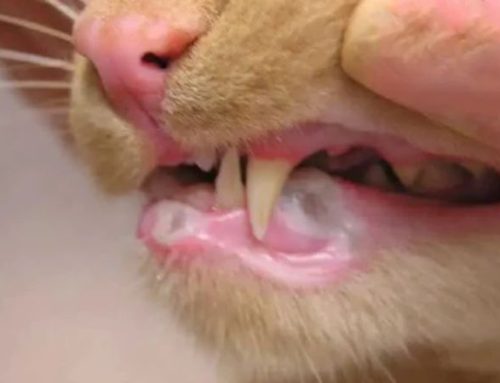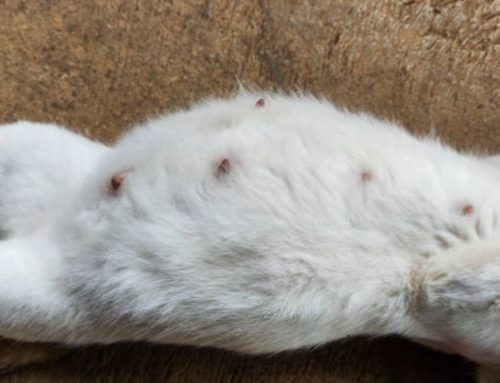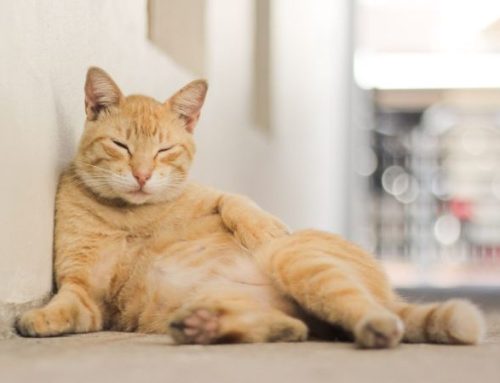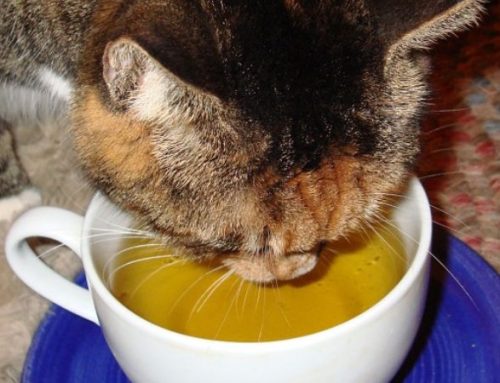Struggling to breathe or showing signs of lethargy and loss of appetite can sometimes signal something far more serious: pneumonia. This condition inflames the lungs and airways, making it difficult for oxygen to reach the bloodstream and putting a feline friend’s health at risk.
Understanding the symptoms, causes, and treatment options can make all the difference. Read on with Nexus Pets to discover everything you need to know about cat pneumonia from early warning signs to life-saving care strategies.
What is Cat Pneumonia?
Cat pneumonia is a serious respiratory condition characterized by inflammation of the lungs and airways, which can interfere with the transfer of oxygen from the lungs into the bloodstream. This disruption in oxygen exchange can cause difficulty breathing, reduced oxygen levels in the blood, and overall weakness in affected cats. Pneumonia can develop due to a variety of infectious agents or physical irritants, and it requires prompt veterinary attention to prevent complications.
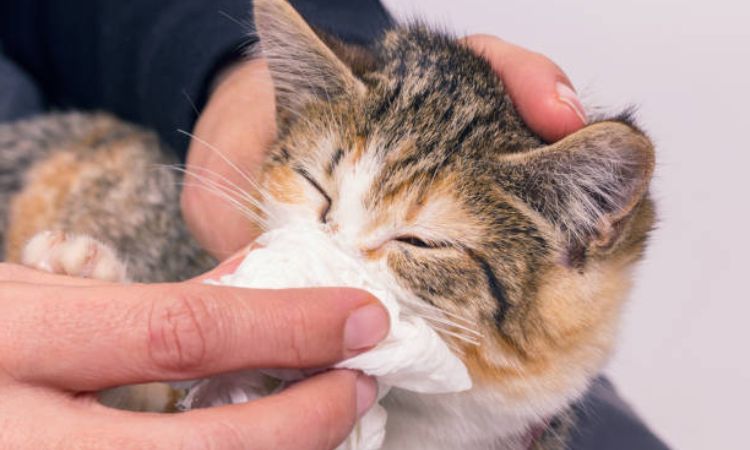
Common Types of Pneumonia in Cats
- Infectious Pneumonia
This is the most frequently diagnosed type in cats and is caused by bacteria, viruses, or a combination of both. Common bacterial culprits include Mycoplasma, Chlamydia, E. coli, and Staphylococcus species, while viral infections often involve feline calicivirus, feline herpesvirus, or feline viral rhinotracheitis. Infectious pneumonia can also develop secondary to other illnesses that compromise the immune system. - Aspiration Pneumonia
Aspiration pneumonia occurs when a cat inhales foreign material—such as vomit, liquid medications, or food—into the lungs. This type is often linked to improper feeding, a weak gag reflex, or certain medical conditions like esophageal disorders. The inhaled substances irritate the lung lining, which can lead to secondary bacterial infections if untreated. - Fungal Pneumonia (Mycotic Pneumonia)
Caused by inhaling fungal spores, often from contaminated soil, fungal pneumonia is less common but can affect both immunocompromised and healthy cats. Cryptococcus is a frequent fungal pathogen, leading to inflammation in the nasal cavity and lungs. In addition to respiratory symptoms, fungal pneumonia may cause skin lesions, eye discharge, or lameness. - Parasitic Pneumonia
Certain parasites, including lungworms and flukes, can invade the cat’s respiratory system, causing inflammation and pneumonia. Parasitic pneumonia is relatively rare but is more likely in outdoor cats, kittens, or feral cats exposed to infected prey or contaminated environments.
Understanding the type of pneumonia affecting a cat is critical for effective treatment, as management strategies vary depending on the underlying cause. Early diagnosis by a veterinarian can significantly improve the cat’s prognosis and reduce the risk of long-term complications.
Symptoms of Cat Pneumonia
Pneumonia in cats is a serious respiratory condition that can develop rapidly or gradually, depending on the underlying cause. Because the symptoms often overlap with other respiratory illnesses, early recognition is essential for prompt treatment and a positive outcome. Common signs to watch for include:
- Rapid or Labored Breathing: Cats may breathe faster than normal or appear to struggle to get enough air. This is often the most noticeable symptom of pneumonia.
- Open-Mouth Breathing: Breathing with the mouth open, especially when at rest, is a sign that your cat is struggling to get sufficient oxygen.
- Persistent or Severe Coughing: A constant cough, sometimes producing mucus or even blood, can indicate infection or inflammation in the lungs.
- Gurgling, Rattling, or Wet Respiratory Sounds: These abnormal lung sounds are caused by fluid or mucus buildup in the airways.
- Fever or Elevated Body Temperature: Infections often cause a noticeable increase in body temperature.
- Nasal Discharge: Cats with pneumonia may have thick, green, yellow, or blood-tinged nasal mucus.
- Bluish Gums, Tongue, or Mouth: Cyanosis, or a bluish tint to the mucous membranes, indicates low oxygen levels in the bloodstream and is a medical emergency.
- Loss of Appetite or Refusal to Eat: Sick cats often eat less or completely stop eating.
- Lethargy and Weakness: Affected cats may be unusually inactive, sleep more, or show reluctance to move.
- Weight Loss and Poor Grooming: Cats may appear unkempt, lose body weight, or neglect regular grooming habits.
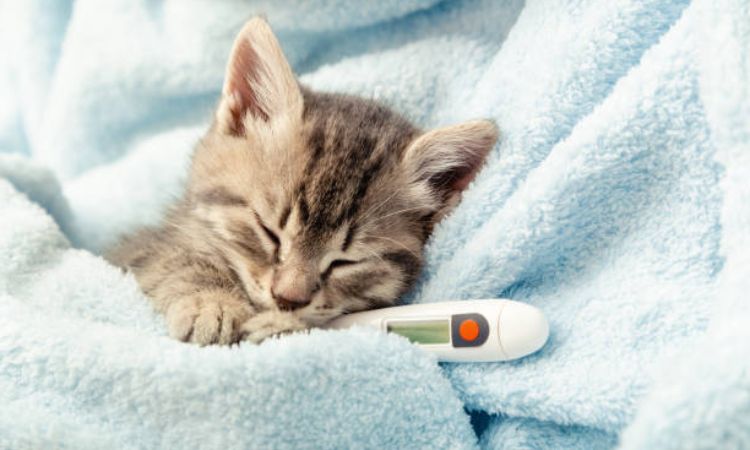
Additional Symptoms Based on Pneumonia Type
- Aspiration Pneumonia: Often caused by inhaling foreign materials, vomit, or improperly administered medications. Cats may experience vomiting, difficulty swallowing, or a rapid heart rate.
- Fungal Pneumonia: Can result in eye discharge, skin lesions, lameness, or other systemic signs if the fungal infection spreads beyond the lungs.
Because pneumonia can affect oxygen delivery throughout the body, untreated cases can quickly become life-threatening. If you notice any combination of these symptoms, it’s critical to seek veterinary care immediately. Early diagnosis and treatment significantly improve the likelihood of a full recovery and prevent long-term complications.
Survival Rate and Prognosis
The survival rate for cats with pneumonia depends heavily on the type of pneumonia, the severity of the infection, and how quickly treatment begins. Overall, cats with mild to moderate bacterial or viral pneumonia who receive prompt veterinary care generally have a good prognosis, with most recovering fully within a few weeks to months.
Factors That Affect Survival
- Type of Pneumonia
- Aspiration pneumonia: This type can be more serious because it often involves both lung tissue damage and secondary bacterial infections. Survival rates are lower if treatment is delayed or if lung damage is extensive.
- Infectious (bacterial or viral) pneumonia: Cats treated promptly with antibiotics or antiviral therapy usually respond well. Early intervention dramatically improves survival chances.
- Fungal pneumonia: This type can be more challenging to treat and may require long-term antifungal therapy. Recovery can take several months, and prognosis depends on the cat’s immune system and early diagnosis.
- Parasitic pneumonia: Generally rare, but with proper treatment, affected cats—especially kittens—can recover well.
- Age and Health Status
Young kittens, elderly cats, and cats with compromised immune systems or underlying illnesses have a higher risk of complications and lower survival rates. Healthy adult cats usually respond better to treatment. - Severity of Infection
Cats with mild symptoms may recover with outpatient care, while cats with severe symptoms—such as labored breathing, low oxygen levels, or systemic inflammatory response—often require hospitalization. Severe cases carry a higher risk of mortality if intensive care is delayed. - Prompt Veterinary Care
Early recognition and treatment are the most important factors in survival. Delayed care can lead to complications like lung abscesses, sepsis, or multiple organ dysfunction, which significantly reduce survival chances.
General Survival Estimate
While exact statistics vary by study and case severity, veterinary sources suggest:
- Mild bacterial or viral pneumonia: 80–90% survival rate with prompt treatment
- Severe bacterial or aspiration pneumonia: 50–70% survival rate, depending on intervention
- Fungal pneumonia: Highly variable; 60–80% recovery is possible with long-term treatment, but prognosis is worse in cats with weakened immune systems
Cats with pneumonia can survive and fully recover if they receive timely veterinary care, appropriate medications, and supportive treatments such as oxygen therapy and fluids. Early detection, monitoring, and adherence to follow-up care are essential to improve survival outcomes.
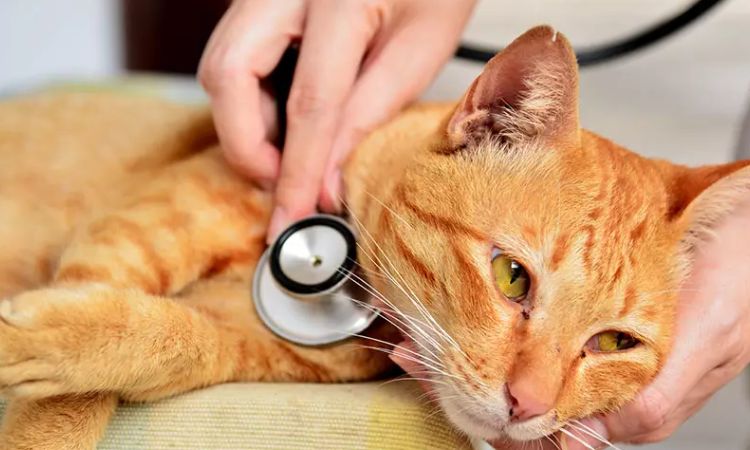
Life-Saving Treatment Guide
Pneumonia in cats is a serious condition that inflames the lungs and airways, making it difficult for oxygen to reach the bloodstream. Prompt treatment is essential, as untreated pneumonia can quickly become life-threatening, especially in kittens, senior cats, or cats with pre-existing health conditions. Understanding how veterinarians diagnose and treat this condition can help you support your cat’s recovery.
How Veterinarians Diagnose Pneumonia
Before treatment begins, your veterinarian will carefully evaluate your cat’s health. The diagnostic process often includes:
- Physical examination: Listening for labored or abnormal breathing sounds.
- Chest X-rays: To check for fluid, inflammation, or infection in the lungs.
- Blood tests: To assess white and red blood cell counts, organ function, and detect infections.
- Respiratory panels or cultures: To identify specific bacteria, viruses, or fungi causing the pneumonia.
Early diagnosis allows for faster treatment and increases the likelihood of a full recovery.
Medical Treatments for Cat Pneumonia
The type and severity of pneumonia determine the appropriate treatment plan. Typical treatments include:
1. Antibiotics
Most cases of bacterial pneumonia require broad-spectrum antibiotics to fight infection. Treatment usually lasts at least two weeks and may extend for several months depending on severity.
2. Antifungal or Antiviral Medications
For pneumonia caused by fungi (mycotic pneumonia) or viral infections, your veterinarian may prescribe antifungal drugs or antiviral medications. Fungal pneumonia is less common but can require prolonged treatment.
3. Hospitalization and Supportive Care
Cats with severe pneumonia may need to be hospitalized for:
- Oxygen therapy to improve breathing
- Intravenous (IV) fluids to prevent dehydration
- Nebulization therapy to keep airways moist and clear
- Feeding tubes if your cat is not eating
Hospital stays usually last 2–5 days, depending on your cat’s condition. Some cats may go home sooner if their symptoms are mild.
4. Home Care
Once discharged, cats often require ongoing treatment at home, including:
- Oral antibiotics or antifungals as prescribed
- Monitoring respiratory symptoms for improvement or worsening signs
- Maintaining a clean, stress-free environment with fresh water, food, and a clean litter box
Follow-up visits with your veterinarian are crucial. Chest X-rays and blood tests may be needed to ensure the infection has cleared completely.
Additional Tips for Managing Cat Pneumonia
- Keep your sick cat separated from other pets if the pneumonia is contagious.
- Maintain hygiene: Wash food bowls, litter boxes, and toys frequently.
- Monitor for any recurrence of symptoms, especially in older cats, kittens, or cats with weakened immune systems.
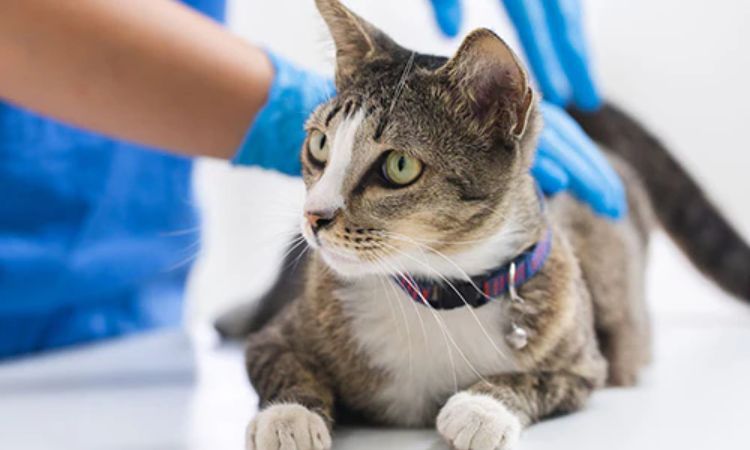
Prognosis and Recovery
The survival rate for cats with pneumonia is generally good with early diagnosis and appropriate treatment. Most cats recover fully without lasting lung damage. However, aspiration pneumonia can be more challenging to treat and may cause complications. Recovery depends on:
- The type of pneumonia
- Severity of the infection
- Your cat’s age and overall health
With timely veterinary care and proper home management, most cats can return to their normal, active lives.
Contagion and Prevention
Pneumonia in cats can sometimes be contagious, depending on its cause. Viral and bacterial types of pneumonia have the potential to spread to other cats, and in rare cases, dogs or other small pets that are in close contact with the infected cat. Fungal and parasitic pneumonia, however, are generally not contagious between animals.
How Pneumonia Spreads Among Pets
Cats with infectious pneumonia can release pathogens through:
- Nasal discharge
- Coughing or sneezing
- Saliva
- Contaminated food and water bowls, litter boxes, and toys
Because these infectious agents can survive on surfaces, careful management is essential to protect other pets in your household.
Best Practices to Prevent the Spread of Cat Pneumonia
To minimize the risk of transmission:
- Isolation: Keep your sick cat in a separate room away from healthy pets until fully recovered. Limit contact with other animals to prevent cross-contamination.
- Hygiene: Wash your hands thoroughly after handling the sick cat. Avoid touching your face or other pets until hands are clean.
- Cleaning and Disinfection: Frequently clean food and water bowls, litter boxes, bedding, and toys. Disinfect surfaces that the infected cat may have come into contact with to remove lingering pathogens.
- Comfort and Care: Ensure your isolated cat has a clean, comfortable resting area, access to fresh water, and proper nutrition to support recovery.
By following these practices, you can reduce the risk of pneumonia spreading to other pets while supporting your sick cat’s recovery.


